Roanoke, Virginia
When Matthew Coates and Tim Meldrum won the 2005 C2C Home competition (judged by William McDonough, Daniel Libeskind, among others), they hoped to see their renderings develop into an actual residence. But three years later, the team is waiting for technology, and funding, to catch up to their vision of a home that is off-the-grid, thanks to the help of Popeye’s power: spinach.
The C2C design reinterprets an age-old concept: the hearth. Made from concrete and steel, the 1,600-square-foot L-shaped home is topped with a tapered whirling chimneylike core that extends high above the roof plane. This core serves as a louvered skylight and temperature-stabilizing heat sink for the one-story home, and could one day support its revolutionary cladding: a conductive material that produces photosynthetic energy generated from spinach protein.
Based on emerging technology and scientific research, spinach protein cells sandwiched between glass may have the potential to generate energy. This living facade would not only be photosynthetic, but phototropic too; it would grow to follow the path of the sun, generating electricity.
The facade is not the only green element of this home. Glass and metal panels insulated with soy foam comprise the exterior walls. A green roof absorbs and filters storm water through vegetation and soil while two large openings in the roof funnel rain to the building core. There, the rain is stored to serve for plumbing, flushing toilets, and other household needs. A bio-filtration system naturally breaks down and separates solid human waste from black water and then filters the black water under and alongside the house through a series of subsurface gravels and soils, from coarse to fine. Thus, the house does not require connection to a sewer or septic tank.
PeopleArchitect: Personnel in architect's firm: The following folks are not employees of Coates Design Architects, but contributed to the project: CAD system, project management, or other software used: |
Products
|
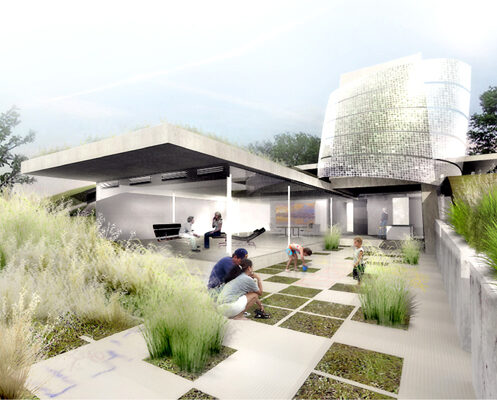
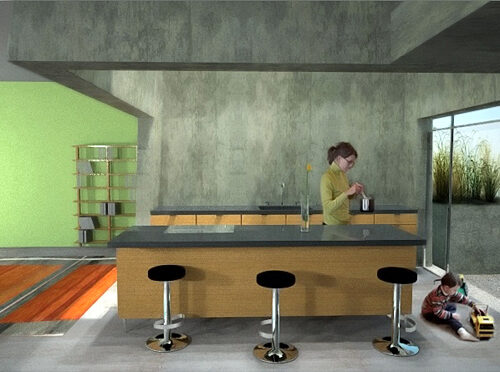
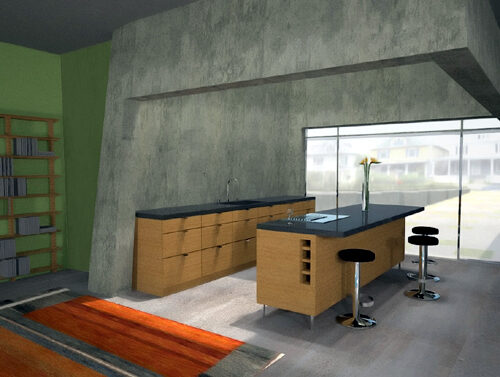
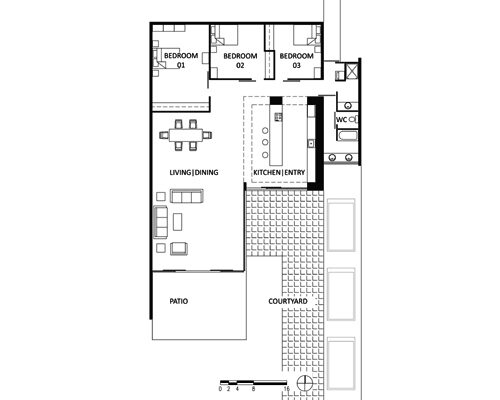
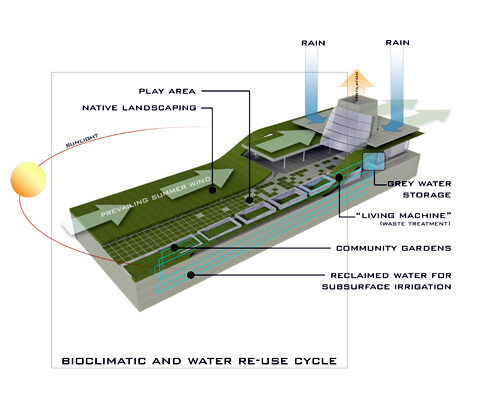

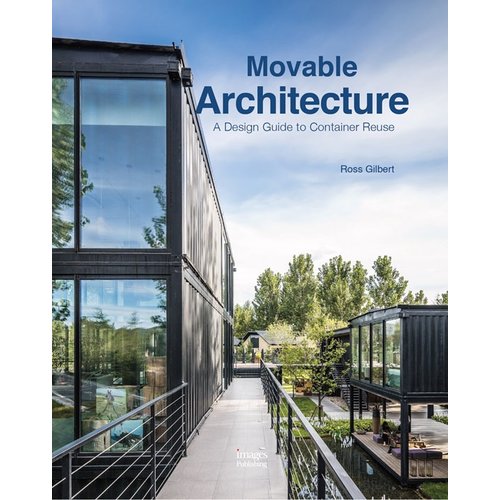
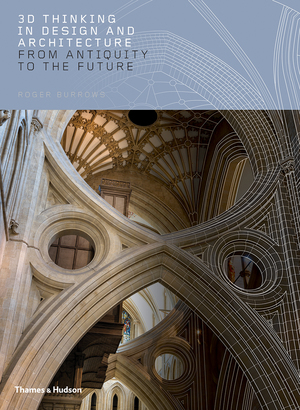
Post a comment to this article
Report Abusive Comment